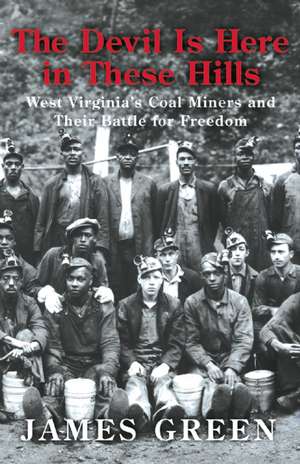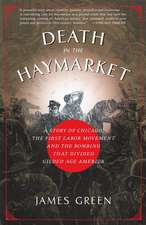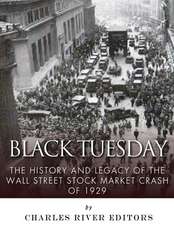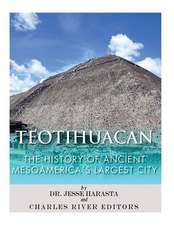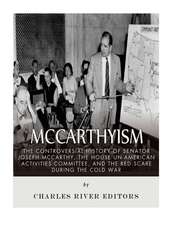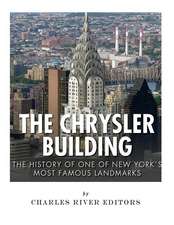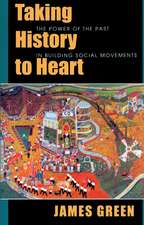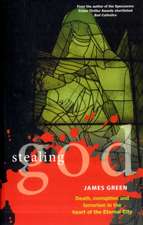The Devil Is Here in These Hills: West Virginia's Coal Miners and Their Battle for Freedom
Autor James Greenen Limba Engleză Paperback – 4 ian 2016
From before the dawn of the twentieth century until the arrival of the New Deal, one of the most protracted and deadly labor struggles in American history was waged in West Virginia. On one side were powerful corporations and industrialists whose millions bought political influence and armed guards for their company towns. On the other side were 50,000 mine workers, the nation’s largest labor union, and the legendary “miners’ angel,” Mother Jones. Attempts to unionize were met with stiff resistance. Fundamental rights were bent, then broken, and the violence evolved from bloody skirmishes to open armed conflict. The fight for civil rights and unionization in West Virginia verged on civil war and stretched from the creeks and hollows to the courts and the U.S. Senate. In The Devil Is Here in These Hills, celebrated labor historian James Green tells this story like never before.
Preț: 111.37 lei
Nou
Puncte Express: 167
Preț estimativ în valută:
21.31€ • 21.99$ • 18.04£
21.31€ • 21.99$ • 18.04£
Carte disponibilă
Livrare economică 11-25 februarie
Preluare comenzi: 021 569.72.76
Specificații
ISBN-13: 9780802124654
ISBN-10: 0802124658
Pagini: 448
Dimensiuni: 140 x 210 x 30 mm
Greutate: 0.36 kg
Ediția:First Trade Paper Edition
Editura: Grove/Atlantic, Inc.
Colecția Grove Press
ISBN-10: 0802124658
Pagini: 448
Dimensiuni: 140 x 210 x 30 mm
Greutate: 0.36 kg
Ediția:First Trade Paper Edition
Editura: Grove/Atlantic, Inc.
Colecția Grove Press
Recenzii
“An ambitious, vivid account . . . A vital and anecdotally rich history of the struggle to organize coal miners in West Virginia . . . Green presents readers with a refreshingly nuanced and fuller depiction of this class of workers than previously conceived . . . The Devil Is Here in These Hills is ambitious in scope [and] fast-moving.”
—Minneapolis Star Tribune
“The story James Green has to tell in The Devil Is Here in These Hills . . . is among the best and largely forgotten American stories.”
—New York Times
“James Green provides what could be the best history of events in West Virginia from 1892 to 1933, especially in the coalfields.”
—Charleston Gazette (West Virginia)
“The Devil is Here in These Hills provides much needed perspective on the economic, social and political issues that still confound the Mountaineer State. . . . The author’s nuanced treatment . . . is the way history should be written. . . . Mr. Green’s thorough research and steady analysis . . . gives this backwoods struggle between capital and labor the due it deserves. He tells a dark, often despairing story from a century ago that rings true today.”
—Pittsburgh Post-Gazette
“Deepens our understanding of . . . well-known labor conflicts . . . The Devil Is Here in These Hills not only succeeds in bringing together heretofore disparate episodes in coal miners’ struggles for social justice but convincingly connects these moments and movements to a central theme: ‘a people’s fight to exercise freedom of speech and freedom of association in the workplaces where the rights of property owners had reigned supreme.’”
—Journal of American History
“A lively and accessible history of the West Virginia mine wars and the struggle for the United Mine Workers of America union from the 1890s through the 1920s. This is the most authoritative book written on this bloody and turbulent chapter of US history since David Allan Corbin’s 1981 Life, Work, and Rebellion in the Coal Fields.”
—Choice
“James Green has resurrected an important, searing piece of our heritage—and just the kind of thing your high school American History teacher didn’t teach you. His lively and moving account of the West Virginia mine wars is a reminder of how painfully long people in this country had to fight to gain even barely decent wages and working conditions. And, as today’s gap between the 1% and everyone else grows ever wider, the era of the robber barons he evokes so well doesn’t seem that far away.”
—Adam Hochschild, author of To End All Wars and King Leopold’s Ghost
“In James Green’s capable hands, the bloody Appalachian mine wars become an important national story of the forces of corporate greed met with the indomitable power of the human spirit. Insightful, eloquent—The Devil is Here in These Hills will forever change the way we think of the miners’ role in early twentieth century history.”
—Philip Dray, author of There is Power in a Union: The Epic Story of Labor in America
“The Devil is in These Hills is the most comprehensive and comprehendible history of the West Virginia Coal War I've ever read. James Green has made sense of a half century of violent confrontation.”
—John Sayles, writer and director of Matewan
“Green mines the historically dark seams of the sanguinary Mountain State coal wars that raged in the early decades of the 20th century. . . . Green opens our eyes with his assiduous research and steady storytelling.”
—Kirkus Reviews (starred review)
“Green . . . has assembled a gritty cast of characters in this fact-rich recounting of the West Virginia mine war . . . These events, until now with Green’s account, have been largely forgotten, in some instances suppressed. Green gives the troubling era rebirth.”
—Bookreporter
“Green does an outstanding job here of bringing this period to life, giving readers a vivid picture of the hardscrabble Appalachian miners’ day-to-day existence and their frequent bloody skirmishes with coal company hired guns . . . A thoroughly documented and masterfully written account of a little-remembered but critical period in U.S. history, when unions scored a major victory for workers’ rights.”
—Booklist
“There are many fine photos of the struggles in West Virginia, but Green gives us a full-length feature film, telling the fifty-year-long saga of the fight against greed and exploitation. An excellent book.”
—Elliott Gorn, professor of history at Loyola University Chicago and author of Mother Jones: The Most Dangerous Woman in America
“James Green’s The Devil is Here in These Hills brilliantly locates the West Virginia Mine Wars within the contexts of West Virginia and American history and portrays this story as a basic struggle for the freedoms Americans have always expected as their birthright. Green personifies this class struggle in a panorama of heroes, antiheroes, and the mass of ordinary people doing unordinary things to achieve a better life. This is an outstanding book which, undoubtedly, will stand for a long time to come as the best single volume on the subject.”
—Ronald L. Lewis, Professor of History Emeritus, West Virginia University
“James Green’s astonishing book deftly depicts a multinational and interracial group of hard-bitten men, rallied by an Irish-born grandmother, who waged a war for democracy that lasted forty years. As this masterful history demonstrates, the South was often a hotbed of unionism, poor women proved feisty and enduring adversaries, and remote ‘hillbillies’ lived in one of the most industrialized regimes in the world. . . . As Americans grow increasingly concerned about global capital’s oppression of workers, we would do well to understand how and why it happened here and what it took to stop it.”
—Glenda Elizabeth Gilmore, Peter V. and C. Vann Woodward Professor of History, Yale University
“Engaging and easy to follow. [Green] is a gifted storyteller who manages to weave a fascinating narrative that is both scholarly and fun to read. . . . Another strength of Green’s book is his ability to put the labor strife in broader contexts, specifically that of Appalachian culture, and the labor strife prominent in much of the U.S. . . . I would recommend The Devil is Here in These Hills to anyone with an interest in American history, mining, or Appalachian studies. James Green has written an enlightening, accessible tome that should become the standard history of mining unionization in America.”
—Appalachian History
“A story full of pathos and amazing characters that seem invented for a novel or film and become larger than life in Green’s deft hands . . . Green . . . plumbs much of the little-known scholarly work on various aspects of these years to give us a new and compelling accessible synthesis.”
—West Virginia History
“Celebrated labor historian James Green tells the story of West Virginia and coal like never before.”
—Grand Forks Herald (North Dakota)
“[A] captivating new book . . . Aside from telling riveting stories of labor battles, Green also dissects how the mine wars are interpreted today . . . [A] beautifully written account.”
—Truthout
“James Green brings to light a little-known labor battle that never garnered the same fame as the automotive and steel industry tussles, yet exceeds those scraps in the depths of its brutality and inhumanity . . . This engaging account mirrors many economic issues of the present day.”
—Fredericksburg Free Lance-Star
—Minneapolis Star Tribune
“The story James Green has to tell in The Devil Is Here in These Hills . . . is among the best and largely forgotten American stories.”
—New York Times
“James Green provides what could be the best history of events in West Virginia from 1892 to 1933, especially in the coalfields.”
—Charleston Gazette (West Virginia)
“The Devil is Here in These Hills provides much needed perspective on the economic, social and political issues that still confound the Mountaineer State. . . . The author’s nuanced treatment . . . is the way history should be written. . . . Mr. Green’s thorough research and steady analysis . . . gives this backwoods struggle between capital and labor the due it deserves. He tells a dark, often despairing story from a century ago that rings true today.”
—Pittsburgh Post-Gazette
“Deepens our understanding of . . . well-known labor conflicts . . . The Devil Is Here in These Hills not only succeeds in bringing together heretofore disparate episodes in coal miners’ struggles for social justice but convincingly connects these moments and movements to a central theme: ‘a people’s fight to exercise freedom of speech and freedom of association in the workplaces where the rights of property owners had reigned supreme.’”
—Journal of American History
“A lively and accessible history of the West Virginia mine wars and the struggle for the United Mine Workers of America union from the 1890s through the 1920s. This is the most authoritative book written on this bloody and turbulent chapter of US history since David Allan Corbin’s 1981 Life, Work, and Rebellion in the Coal Fields.”
—Choice
“James Green has resurrected an important, searing piece of our heritage—and just the kind of thing your high school American History teacher didn’t teach you. His lively and moving account of the West Virginia mine wars is a reminder of how painfully long people in this country had to fight to gain even barely decent wages and working conditions. And, as today’s gap between the 1% and everyone else grows ever wider, the era of the robber barons he evokes so well doesn’t seem that far away.”
—Adam Hochschild, author of To End All Wars and King Leopold’s Ghost
“In James Green’s capable hands, the bloody Appalachian mine wars become an important national story of the forces of corporate greed met with the indomitable power of the human spirit. Insightful, eloquent—The Devil is Here in These Hills will forever change the way we think of the miners’ role in early twentieth century history.”
—Philip Dray, author of There is Power in a Union: The Epic Story of Labor in America
“The Devil is in These Hills is the most comprehensive and comprehendible history of the West Virginia Coal War I've ever read. James Green has made sense of a half century of violent confrontation.”
—John Sayles, writer and director of Matewan
“Green mines the historically dark seams of the sanguinary Mountain State coal wars that raged in the early decades of the 20th century. . . . Green opens our eyes with his assiduous research and steady storytelling.”
—Kirkus Reviews (starred review)
“Green . . . has assembled a gritty cast of characters in this fact-rich recounting of the West Virginia mine war . . . These events, until now with Green’s account, have been largely forgotten, in some instances suppressed. Green gives the troubling era rebirth.”
—Bookreporter
“Green does an outstanding job here of bringing this period to life, giving readers a vivid picture of the hardscrabble Appalachian miners’ day-to-day existence and their frequent bloody skirmishes with coal company hired guns . . . A thoroughly documented and masterfully written account of a little-remembered but critical period in U.S. history, when unions scored a major victory for workers’ rights.”
—Booklist
“There are many fine photos of the struggles in West Virginia, but Green gives us a full-length feature film, telling the fifty-year-long saga of the fight against greed and exploitation. An excellent book.”
—Elliott Gorn, professor of history at Loyola University Chicago and author of Mother Jones: The Most Dangerous Woman in America
“James Green’s The Devil is Here in These Hills brilliantly locates the West Virginia Mine Wars within the contexts of West Virginia and American history and portrays this story as a basic struggle for the freedoms Americans have always expected as their birthright. Green personifies this class struggle in a panorama of heroes, antiheroes, and the mass of ordinary people doing unordinary things to achieve a better life. This is an outstanding book which, undoubtedly, will stand for a long time to come as the best single volume on the subject.”
—Ronald L. Lewis, Professor of History Emeritus, West Virginia University
“James Green’s astonishing book deftly depicts a multinational and interracial group of hard-bitten men, rallied by an Irish-born grandmother, who waged a war for democracy that lasted forty years. As this masterful history demonstrates, the South was often a hotbed of unionism, poor women proved feisty and enduring adversaries, and remote ‘hillbillies’ lived in one of the most industrialized regimes in the world. . . . As Americans grow increasingly concerned about global capital’s oppression of workers, we would do well to understand how and why it happened here and what it took to stop it.”
—Glenda Elizabeth Gilmore, Peter V. and C. Vann Woodward Professor of History, Yale University
“Engaging and easy to follow. [Green] is a gifted storyteller who manages to weave a fascinating narrative that is both scholarly and fun to read. . . . Another strength of Green’s book is his ability to put the labor strife in broader contexts, specifically that of Appalachian culture, and the labor strife prominent in much of the U.S. . . . I would recommend The Devil is Here in These Hills to anyone with an interest in American history, mining, or Appalachian studies. James Green has written an enlightening, accessible tome that should become the standard history of mining unionization in America.”
—Appalachian History
“A story full of pathos and amazing characters that seem invented for a novel or film and become larger than life in Green’s deft hands . . . Green . . . plumbs much of the little-known scholarly work on various aspects of these years to give us a new and compelling accessible synthesis.”
—West Virginia History
“Celebrated labor historian James Green tells the story of West Virginia and coal like never before.”
—Grand Forks Herald (North Dakota)
“[A] captivating new book . . . Aside from telling riveting stories of labor battles, Green also dissects how the mine wars are interpreted today . . . [A] beautifully written account.”
—Truthout
“James Green brings to light a little-known labor battle that never garnered the same fame as the automotive and steel industry tussles, yet exceeds those scraps in the depths of its brutality and inhumanity . . . This engaging account mirrors many economic issues of the present day.”
—Fredericksburg Free Lance-Star
Notă biografică
James Green is the author of five books, including the critically acclaimed Death in the Haymarket: A Story of Chicago, the First Labor Movement and the Bombing that Divided Gilded Age America. Green received his PhD in history from Yale University and is a professor of history emeritus at the University of Massachusetts, Boston. He lives in Somerville, Massachusetts.
